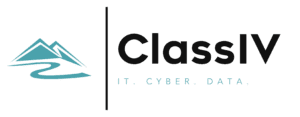
Data Governance Framework: Best Practices for Secure Data Management
Managing vast amounts of data in today’s digital age can be overwhelming without the right strategies. With an increasing volume of data generated daily and essential regulations to adhere to, a robust system is needed – enter data governance frameworks.


Introduction to Data Governance Frameworks
Definition of a data governance framework
A data governance framework isn’t just technical management; it’s about recognizing that data is an asset to your business and should be treated accordingly. A comprehensive tool designed to shape information handling across an organization, this vital backbone helps your company secure its information assets while maintaining quality standards. Think of these as critical parameters for accurate decision-making and ensuring regulatory compliance.
Importance of data governance frameworks in managing data quality and security
Effective data management’s true power lies in acquiring and leveraging it optimally. A well-implemented governance framework enhances data quality, surety, usability, and efficiency. A robust data governance framework protects your organization’s crown jewels – its official records and other valuable pieces of information – from various risks such as unauthorized access, non-compliance fines, and legal action from breaches.
While the task might seem daunting at first glance, understanding its importance makes navigating this journey more manageable. As we delve deeper into why Data Governance Frameworks are essential, the components involved with creating them, and the challenges faced during this process – you’ll see what makes these structures instrumental for successful ventures.

Why Data Governance Frameworks Are Important
Understanding why data governance is important is crucial as we navigate the digitized world. It allows companies to manage their information resources efficiently while ensuring safety protocols and enhancing business performance.
Ensuring Compliance with Regulatory Requirements
One of the primary reasons behind adopting a comprehensive data governance framework is that it assures compliance with regulatory laws and guidelines. Managing vast amounts of raw data can prove challenging amidst complex privacy laws like GDPR or HIPAA. Non-compliance could mean legal repercussions and damage to an organization’s reputation. A well-formulated framework simplifies your journey toward regulatory compliance by organizing data to meet specific standards and requirements, reducing risks associated with non-compliant actions.
Standardizing and Improving Data Quality
To make accurate decisions, organizations need to access high-quality, standardized data. A robust governance model ensures this by implementing procedures for maintaining consistency across datasets. By defining common standards for metadata management (data about data), organizations ensure everyone works from the exact version of the truth, improving overall quality in myriad ways, including accuracy, consistency, completeness, and reliability—enhanced operational efficiency leading to significant cost savings.
Enabling Data Democratization and Fostering Trust in Data
Data democratization marks a mighty revolution today. Simply put, it encapsulates the core idea of making information readily accessible across all organizational levels without compromising security or integrity. However, if not managed correctly, it might lead to chaos or inaccuracies due to differing interpretations of raw facts.
This is where practical data governance steps into the picture! A well-crafted framework promotes open access and sets boundaries on how data should be used responsibly – amplifying trust while minimizing potential misuses or confusion around decentralized access points.
Enhancing Business Performance and Decision-Making
We operate in a business landscape pulsating with raw figures extracted from various corners of the world. Interpreting and using this data to formulate strategic actions is essential in gaining a competitive edge. An efficient data governance framework helps translate raw information into valuable insights, leading to confident decisions that spell success.
When data is streamlined, accurate, and trustworthy, businesses can focus more on leveraging that data for analytics or predictive modeling rather than troubleshooting quality issues. This fuels innovation while driving performance towards organizational goals.
In summary, understanding why data governance is critical offers our passage into a more intelligent era where decisions become less intuition-infused and more intelligence-driven! Committing to building robust data governance frameworks does far more than ensuring regulatory compliance; it activates your journey towards enhanced business outcomes, intertwining trust with democratized access to quality data.

Best Practices for Creating a Data Governance Framework
When crafting a practical data governance framework, understanding the nuances of data management is critical. From defining clear goals to ensuring continuous improvement, let’s explore some best practices that can help ensure your framework ticks all the right boxes.
Defining the Purpose and Goals of the Framework
Your first step in creating a solid data governance framework is outlining its purpose and goals. This will act as your guiding roadmap throughout your data governance journey. For example, are you aiming to improve data quality? You want to increase regulatory compliance or boost business decisions through data-driven insights.
Moreover, having specific, measurable, attainable, relevant, and time-bound (SMART) goals can help track progress over time. They lend an element of structure that brings clarity to everyone involved. By clearly delineating these objectives from the outset, you’ll ensure all future actions align with your organization’s overarching vision for data handling.
Understanding the Organization’s Current State of Data Governance Readiness
It’s also essential to thoroughly assess your current state of readiness. This involves evaluating resources available – both technological and human – and examining existing processes related to data usage and protection measures already in place. A gap analysis might be helpful here: it highlights issues missing from your current setup, which this initiative should address.
It’s important to remember that understanding your organization’s data practices involves more than just technology. You must consider all aspects of your organizational culture and how it treats data as an asset. By identifying inefficiencies and areas that need attention, you can gain a clear understanding of where you currently stand and compare that to your desired results, as outlined in your SMART objectives.
Keeping the Framework Simple yet Flexible To Adapt To Changing Needs
Another vital consideration is simplicity balanced alongside flexibility. Though one might feel compelled to build exhaustive frameworks encompassing every imaginable scenario touching upon edge cases that hardly occur under normal circumstances – resist this urge. High complexity can be a barrier to effective implementation.
To quote Albert Einstein, “Everything should be made as simple as possible, but not simpler.” Strive for simplicity in your framework design without compromising vital components.
Yet, you also need flexibility since rigidity might lead your practices toward obsoleteness. The world of data changes rapidly, and successful governance requires adapting your framework as new protocols, regulations, and technologies emerge.
Planning for Ongoing Education, Training, and Continuous Improvement
Lastly, continuous improvement is pivotal in establishing impeccable data governance frameworks. This implies an ongoing commitment to educating personnel regarding changing norms and offering them training sessions to improve their proficiency in data handling processes. Remember that the most robust safety net against misplaced or misused data lies with those who handle it daily – well-informed & practiced employees.
Additionally, ensure that regular audits and performance reviews form part of the standard operation procedures. A ‘post-mortem’ at fixed intervals assesses where the bottlenecks occurred, or specific goals missed their target.
Best practices concerning your Data Governance Frameworks compile success from diverse areas, all partnering towards superior decision-making, marked by improved security assurances.

Challenges and Solutions in Implementing a Data Governance Framework
Implementing data governance is complex. It’s line-walking where speed meets prudence, balancing risk with returns. I intend to outline your common challenges during the implementation journey and proffer possible solutions.
Balancing Speed with Risk Management in a Fast-paced Data Analytics Environment
Maintaining an equilibrium between agility and caution is the challenge that tops the chart. Organizations strive to exploit data quickly for strategic insights but need help when encumbered by slow processes related to data governance, such as validating data accuracy or obtaining necessary approvals.
A solution lies in intelligent automation — automating routine tasks can alleviate time constraints while preserving the integrity of your data governance framework. This action could involve mechanizing verification processes using AI or setting up self-service tools that allow quick access to reliable datasets.
Leveraging DataOps Practices for Efficient Data Governance
Data Operations (DataOps) has become imperative for modern businesses aiming for efficient data governance. An agile methodology, yet its adoption presents its own set of challenges, including cultural resistance and technical integration.
“Overcoming these hurdles requires blending change management strategies with steadfast executive support,” says Elliot Knoblich from TechBeacon Consulting. A practical step would be to start small – implement DataOps within one team or on a specific project before gradually expanding across the organization.
And don’t forget about continuous training! Equipping your staff with relevant skills is essential for successful assimilation into the workflow.
Addressing Common Pitfalls and Lessons Learned from Successful Implementations
Learning from others’ experiences proves invaluable when implementing anything new, let alone something as intricate as a data governance framework. Common pitfalls include clarity regarding objectives or scope, insufficient stakeholder engagement, and the need for more standardization among disparate teams, leading to inconsistencies in taxonomies or terminology usage.
To successfully navigate these woes:
- Define clear objectives and ensure company-wide understanding of the same.
- Foster a data-oriented culture by promoting data literacy and fostering collaboration among different teams.
- Set standardized definitions, taxonomies, and processes for everyone to follow.
Learn from those who have made mistakes and implement your framework without hitches!
Need Some Cyber Support?
Conclusion
Data governance frameworks are pivotal in navigating the intricate realm of data management. With the crescendoing pace of digital transformation across all industries, harnessing big data’s potential has never been more paramount — but not without a robust management framework.
Such frameworks maintain the equilibrium between accessibility and security, promoting IT compliance while safeguarding an organization’s veneer against cyber threats. If your goal is to extract genuine insights from your data assets and drive informed decision-making, implementing a rigorous data governance framework isn’t optional – it’s essential.
In today’s digital landscape, where data is a critical driver of business growth, the importance of effectively managing these valuable assets cannot be overstated. Class IV is here to assist you. Our data consulting service helps in developing a comprehensive data governance strategy, ensuring you make the most of your data while maintaining its integrity and security. Are you ready to take this vital step? With Class IV, you can confidently build your strategic edge in data governance. Let’s embark on this journey together!

